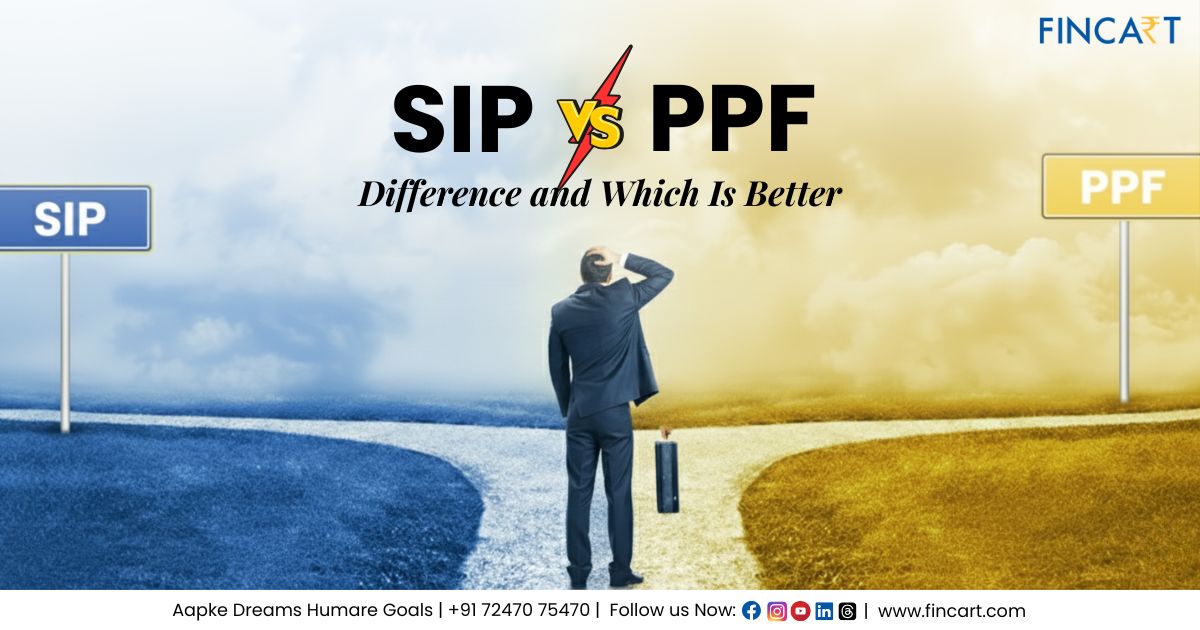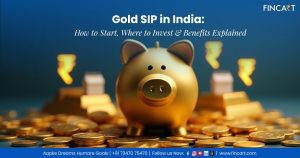When it comes to building wealth and planning for a secure financial future, the choice between SIP vs PPF is a common dilemma for many investors in India. Both investment avenues offer unique advantages, but understanding their key differences can help you make an informed decision tailored to your financial goals.
In this article, we will explore the differences between SIP (Systematic Investment Plan) and PPF (Public Provident Fund), their benefits, risks, and which one may suit your long-term financial strategy.
Understanding SIP and PPF
Before we dive into the comparison, let’s briefly understand what SIP and PPF are.
What is SIP?
A Systematic Investment Plan (SIP) is an investment strategy in mutual funds where you invest a fixed amount regularly, usually monthly, in equity or debt mutual funds. SIPs leverage the power of compounding and rupee cost averaging, making it easier for investors to accumulate wealth over time.
Key features of SIP include:
- Flexibility in investment amount
- Regular and disciplined investing
- Potential for higher returns in the long term (especially equity SIPs)
- Liquidity, as you can redeem partially or fully, subject to fund terms
What is PPF?
The Public Provident Fund (PPF) is a government-backed long-term savings scheme designed to provide financial security and tax benefits. PPF is considered a safe investment option with assured returns and is ideal for risk-averse investors.
Key features of PPF include:
- Fixed interest rates declared by the government
- Tax benefits under Section 80C of the Income Tax Act
- Lock-in period of 15 years (partial withdrawals allowed after 5 years)
- Safe and stable returns, with zero market risk
SIP vs PPF – Key Differences
Understanding the differences between SIP vs PPF is crucial for choosing the right investment based on your risk appetite, financial goals, and investment horizon.
| Feature | SIP | PPF |
| Type of Investment | Market-linked (equity or debt mutual funds) | Government-backed, fixed-income |
| Returns | Potentially higher, variable depending on market performance | Fixed, currently around 7–8% per annum |
| Risk | Moderate to high, depending on the fund | Low, virtually risk-free |
| Liquidity | Partial/complete withdrawal allowed, depending on fund terms | Partial withdrawal allowed after 5 years; full maturity in 15 years |
| Tax Benefits | Tax benefits under Section 80C; capital gains tax applicable | Tax-free returns; tax benefits under Section 80C |
| Ideal for | Wealth creation over medium to long-term | Long-term savings and capital protection |
SIP vs PPF – Pros and Cons
Investors often face a dilemma when choosing between SIP vs PPF. Both options serve distinct purposes—SIP focuses on growth, while PPF prioritizes safety. Understanding the pros and cons of each can help you plan a balanced financial strategy.
SIP Pros
- Potentially higher long-term returns: SIPs in equity or hybrid mutual funds can generate significant wealth over time, making them ideal for long-term financial goals.
- Flexibility and liquidity: You can adjust your SIP contributions, pause them, or redeem partially if required, offering much-needed flexibility.
- Rupee cost averaging and compounding benefits: Regular investments through a SIP smooth out market volatility and harness the power of compounding.
- Accessible investment: SIPs allow you to start with as little as ₹500 per month, making systematic investing approachable for beginners.
- Professional guidance for optimal planning: Using a best SIP planner, a systematic investment planner, or consulting a SIP advisor ensures that your SIP investments are aligned with your risk profile and long-term objectives.
SIP Cons
- Market-linked risk: SIP returns are dependent on the performance of the underlying mutual fund and are subject to market fluctuations.
- No guaranteed returns: Unlike PPF, SIP returns are not fixed; poor market performance can reduce gains in the short term.
- Discipline required: Maximizing SIP benefits requires consistency and patience over the long-term investment horizon.
PPF Pros
- Guaranteed returns with zero market risk: PPF is backed by the government, offering safe, predictable growth for risk-averse investors.
- Tax-free income: PPF contributions qualify for deductions under Section 80C, and interest earned is completely tax-free.
- Encourages disciplined long-term savings: With a 15-year lock-in period, PPF promotes disciplined savings for retirement or other long-term financial goals.
PPF Cons
- Limited liquidity: Partial withdrawals are permitted only after 5 years, and the full maturity period of 15 years may restrict access to funds when needed.
- Lower potential returns compared to SIP: While safe, PPF’s fixed returns are generally lower than the potential growth offered by a disciplined equity SIP.
- Rigid investment structure: Annual contribution limits may restrict investors who want to invest more for accelerated wealth creation.
Both SIP vs PPF have distinct advantages. SIPs are suitable for investors seeking growth and willing to accept moderate market risks, while PPF is ideal for conservative investors prioritizing safety and tax-free returns. For optimal wealth creation, many investors benefit from a hybrid approach, combining SIPs for growth and PPF for stability.
Engaging a SIP investment planner or a SIP advisor can help design a personalized investment strategy that balances risk and reward while aligning with your long-term financial objectives.
SIP vs PPF – Which is Better?
Choosing between SIP vs PPF depends largely on your financial goals, risk appetite, and investment horizon. Both have their unique strengths, and the ideal choice often comes down to how you balance growth, safety, and liquidity.
When SIP May Be Better
SIPs are ideal if you want to create wealth over the medium to long term and are comfortable with moderate market risk. Consider SIPs if you:
- Seek potentially higher returns than traditional instruments.
- Prefer flexibility and liquidity to adjust your investment amounts as needed.
- Want to leverage compounding and rupee cost averaging for long-term wealth creation.
- Wish to plan systematically using a best SIP planner, systematic investment planner, or a SIP advisor to ensure your portfolio aligns with your financial goals.
Equity SIPs are especially suited for goals like retirement planning, funding higher education, or building a corpus for significant life milestones, as disciplined contributions over time can result in substantial wealth accumulation.
When PPF May Be Better
PPF is the go-to option for risk-averse investors seeking safety and tax-free returns. Consider PPF if you:
- Prioritize guaranteed returns without market exposure.
- Prefer a long-term, disciplined savings approach for retirement or financial security.
- Wish to benefit from tax-free growth alongside deductions under Section 80C.
- Do not require immediate liquidity and can commit to the 15-year lock-in for maximum benefits.
PPF is particularly suitable for conservative investors or those looking to create a stable financial foundation while complementing other investment avenues like SIPs.
Combining SIP and PPF for Optimal Wealth Creation
For many investors, a hybrid approach works best. By combining SIP and PPF investments, you can balance safety and growth. For example:
- Allocate a portion of your savings to PPF for risk-free, tax-free returns
- Invest in SIPs for higher potential returns and wealth creation
A systematic investment planner can help structure your portfolio to match your risk appetite, time horizon, and financial goals. Using a SIP investment planner or consulting a SIP advisor ensures that your investments are aligned with both short-term and long-term objectives.
Tax Implications of SIP vs PPF
Tax efficiency is a critical factor when comparing SIP vs PPF.
SIP Taxation
- Equity mutual fund SIPs held for more than 1 year are subject to long-term capital gains (LTCG) tax at 10% beyond ₹1 lakh per year
- Debt mutual funds held for over 3 years attract LTCG at 20% with indexation benefits
PPF Taxation
- PPF investments qualify for deduction under Section 80C (up to ₹1.5 lakh per year)
- Interest earned and maturity proceeds are entirely tax-free
How to Choose Between SIP and PPF?
Here are a few tips to help you decide:
- Assess your risk tolerance – Conservative investors may prefer PPF, while those comfortable with market fluctuations can opt for SIP.
- Define your investment horizon – SIPs are suitable for medium to long-term goals; PPF is for long-term planning.
- Consider your tax planning – Both options provide Section 80C benefits, but PPF offers tax-free returns.
- Use professional guidance – A best SIP planner or SIP advisor can help structure a plan that blends both SIP and PPF effectively.
How Fincart Can Help
At Fincart, we believe in empowering investors with knowledge and tailored investment solutions. Our team of experts can guide you to:
- Identify the right mix of SIP and PPF investments based on your goals
- Create a systematic investment planner that maximizes returns while managing risks
- Provide personalized advice through a SIP investment planner or SIP advisor
With Fincart’s assistance, you can achieve financial discipline, wealth creation, and tax efficiency—all while keeping your long-term goals in sight.
Conclusion
Choosing between SIP vs PPF doesn’t have to be a difficult decision. Each investment option has unique advantages: SIPs offer higher growth potential with market exposure, while PPF provides safety, stability, and tax-free returns.
By understanding the differences and leveraging professional guidance from a SIP advisor or using a SIP investment planner, you can structure your investments to create a balanced, diversified, and future-ready portfolio.
Start early, invest consistently, and let compounding work its magic. With the right strategy, SIPs and PPF can complement each other perfectly, ensuring both growth and security for your financial future.




